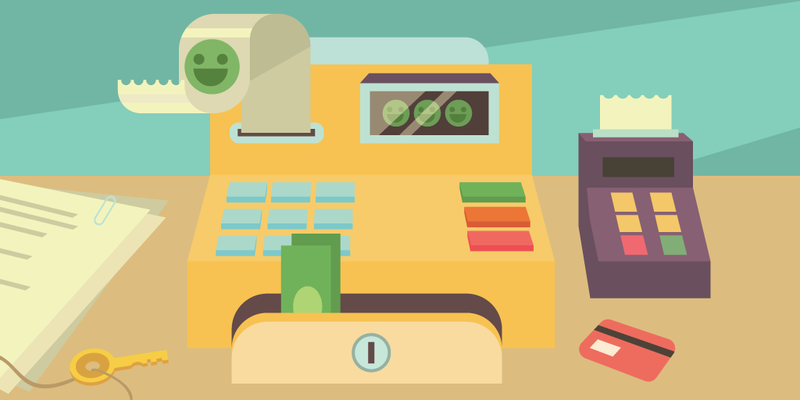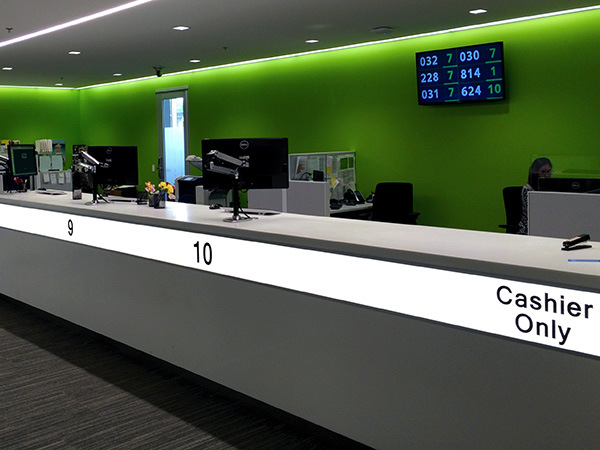What makes a good shopping experience? It’s a fair question — and a very important one, too. One without any singular obvious answer, because smooth sailing for customers involves a whole bunch of factors that are often overlooked.
At least until things go wrong.
Keep in mind: 44% of retail executives consider improving the in-store experience a pivotal aspect of their strategy. And they’re right to think so: one bad part of the in-store experience can sour the whole journey for customers.
Which is why in this article we’re discussing the latest in-store experience trends to transform your business so it can rise above the competition.
1. Fast Service

Sometimes the difference between making a sale and losing the customer comes down to speed. Who are you going to order from? The pizzeria that guarantees a delivery in 15 minutes or the one that says, “Maybe, we’ll deliver in 15 minutes?”
Fast service creates loyal customers. In-store experience trends survey data has shown that customers value speed of service above all other factors. Life is fast-paced and anything that slows us down tends to be viewed negatively.
Stores designed with speed in mind already know the first step in how to improve customer experience in retail stores.
An Intuitive Layout
What makes a good shopping experience is an internal logic, one that makes sense for customer’s needs. Tight corridors and haphazardly placed items add up to a frustrating in-store experience.
Businesses have to ask themselves, “What do customers come to my store for?” And then design an accommodating layout.
Utilizing footfall analytics as part of a queue management system can tell businesses how exactly their customers travel through their store. Do they often buy earbuds when they purchase a new phone? If so, place the earbuds near the smartphones to make the customer’s journey faster and simpler. Customers will thank you for it.
Intuitive layouts also include clearly marked signage. Big bold markers that tell customers exactly where the items are they need to find.
Minimize confusion and encourage customer’s journey to make the best possible in-store experience.
2. Smooth Queueing

Perhaps the most anxiety-inducing aspect of a business is waiting in queue: nearly half of surveyed customers report feeling “very irritated” while waiting in a long line.
Transforming the in-store experience means transforming the queue to minimize irritation and provide a smooth waiting time.
How do we do that?
Besides adopting a serpentine line, which is proven to be the most effective queuing situation, in-store experience trends suggest implementing a queue management system (QMS), like Qminder.
The Smoothest Way To Queue
How does QMS transform the in-store experience? By removing the frustration of queueing entirely. Customers sign-in to the queue at a digital kiosk and are then called by their name when it’s their turn.
Nobody wants to wait in ignorance. QMS takes away that uncertainty by showing customers exactly where they are in queue. Customers don’t feel anxious, and they’re not forced to stand in line, feeling their legs cramp up.
Their time is their own to window-shop or maybe fill out surveys for rewards as they wait. Freeing up customer’s time? Now that’s what makes a good shopping experience.
Plus, when it’s customers turns they are easily matched with the employee who can best assist them with their needs.
Queue management systems are designed to foster a communal experience between businesses and their customers by removing the points of annoyance that hurt customer’s impressions of a business.
3. Great Customer Service

Companies in the United States lose $41 billion each year due to bad customer service. These businesses don’t prioritize the customer, often making the customer jump through multiple bureaucratic hoops before they can get the answer they need.
Make customers lives easier to transform the in-store customer experience. After all, 50% of customers are more like to return to a company after a positive journey.
Much of great customer service comes from businesses prioritizing the customer as their central philosophy. Once every aspect of a business, from sales representatives to accountants, understands that customers are at the forefront of their mission, great customer service follows.
In a pragmatic sense, how to improve customer experience in retail stores means:
Responding to customer inquiries sufficiently and in a timely manner.
Seek out customer feedback through surveys and social media.
Educate customers about products and assist them on their journey.
Ensure staff are adequately informed and trained to assist customers.
4. Keep Employees Happy

The happier employees are, the more productive they are — up to 12% more productive. And when employees are satisfied they can meet the needs of customers in an accommodating fashion.
So don’t overwhelm employees! A healthy portion of lost customers is due to overwhelmed employees: between 65% and 75% of employees are burdened.
How do we make employees happy?
For one, respect employee’s autonomy. Their ability to act independently as representatives of the company. Empower employees with the information they need to effectively assist customers.
Also, manager need to say “Thank you,” to employees. More than two-thirds of surveyed people said they would bypass a higher salary if their employer simply thanked them for their efforts.
Yes, it’s that easy to answer what makes a good shopping experience.
5. Respond to Customer Comments

In-store experience trends stress the need to always respond to customer comments in a timely manner. That means businesses must provide channels through which customers can communicate with them.
We live in the the age of interconnectivity. That means people are discussing your business on social media, review sites, and within their personal networks of friends and family.
The data is telling: 88% of customers are influenced by online reviews when deciding on a purchase. Response have to be fast: 77% of customers stop waiting for a response after six hours,. They give up and take their business elsewhere.
How does this help the in-store experience?
Customers tell businesses exactly how to improve in-store shopping experience. Where their faults are. It’s direct feedback which can be used to improve the in-store customer experience. Invaluable information that ought to be leveraged to its full potential.
Enhancing the in-store experience requires patience and commitment. But the results outweigh the work involved and takes a business from simply being good to great.
As mentioned above, a queue management system like Qminder can greatly enhance the in-store experience. Don’t believe us? Find out for yourself by trying out Qminder for free.






